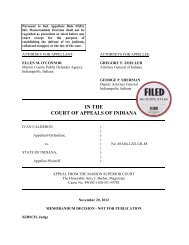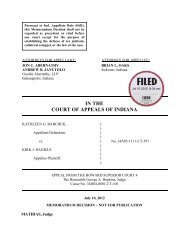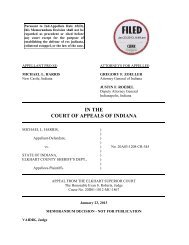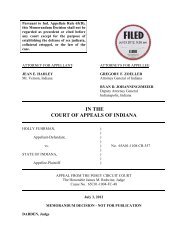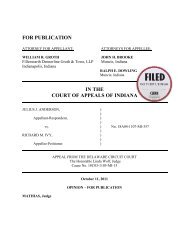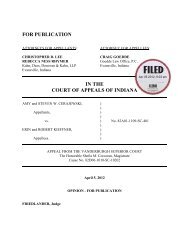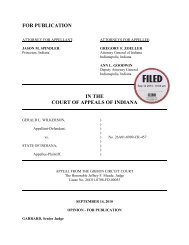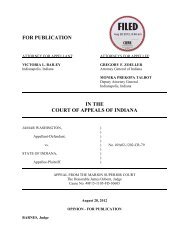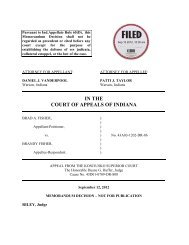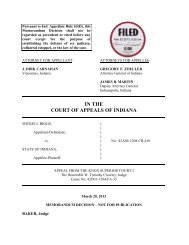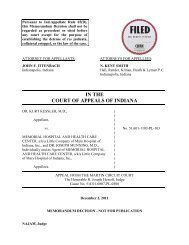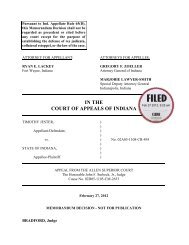Indiana State Health Improvement Plan (I-SHIP) - State of Indiana
Indiana State Health Improvement Plan (I-SHIP) - State of Indiana
Indiana State Health Improvement Plan (I-SHIP) - State of Indiana
You also want an ePaper? Increase the reach of your titles
YUMPU automatically turns print PDFs into web optimized ePapers that Google loves.
INDIANA STATE HEALTH IMPROVEMENT PLAN<br />
Partnering for the Public’s <strong>Health</strong><br />
Geographically, <strong>Indiana</strong> has a land area <strong>of</strong> 36,418 square miles, ranking<br />
it 38 th <strong>of</strong> all states in size. The vast plains across the state, bisected by<br />
the Wabash River, comprise the majority <strong>of</strong> the state‘s geography and<br />
are the basis for the strong agricultural economy in <strong>Indiana</strong>. A high<br />
percentage <strong>of</strong> <strong>Indiana</strong>‘s income also comes from its manufacturing<br />
sector.<br />
<strong>Indiana</strong>‘s population is diverse, with the median age <strong>of</strong> all Hoosiers<br />
being 36.4 years. The state‘s population has increased nearly 16% in the<br />
past two decades. Approximately 12.9% <strong>of</strong> the current population is<br />
over the age <strong>of</strong> 65, nearly a 10% increase in the past decade and a<br />
number that is expected to continue to grow. Table 1.2 identifies the<br />
2000 and 2009 populations in <strong>Indiana</strong>, by age and race, demonstrating<br />
growth over the past decade. <strong>Indiana</strong>‘s total population is expected to<br />
continue to increase; however, that increase will notably be most<br />
significant in the 45 and over age group population.<br />
While the overall population growth has been minimal to moderate in<br />
the state over the past decade, when compared to that <strong>of</strong> the U.S. overall,<br />
the racial and ethnic diversity <strong>of</strong> the state continues to increase. Table<br />
1.2 reveals that the non-White population is currently more than 10% <strong>of</strong><br />
the total population, comprised primarily <strong>of</strong> Blacks i .<br />
The greatest growth since 2000 is in the Hispanic/Latino and Asian<br />
populations, with an 81.7% and 73.3% increase respectively (2010 U.S.<br />
Census). In <strong>Indiana</strong>, as in the U.S., the number <strong>of</strong> persons belonging to<br />
minority groups continues to increase. The state‘s major minority<br />
groups include Blacks, Hispanics/Latinos, and Asians, being distributed<br />
across the state, but primarily in more urban areas. Counties with largest<br />
minority populations include Hamilton, Lake, Marion, Monroe, and<br />
Tippecanoe counties.<br />
It is important to note, for purposes <strong>of</strong> health improvement planning, that<br />
subgroups also exist within the major minority groups and can differ<br />
significantly with regard to language, health beliefs and cultural health<br />
practices. Asian populations in <strong>Indiana</strong>, for example, may include<br />
Chinese, Filipino, Japanese, Korean, Vietnamese and other groups. The<br />
Hispanic/Latino population, similarly, may include Cuban, Mexican,<br />
Puerto Rican, South American, or others.




